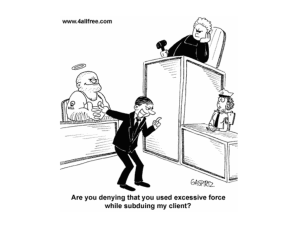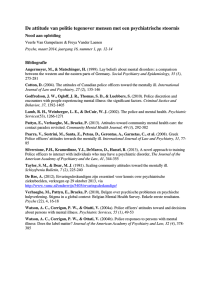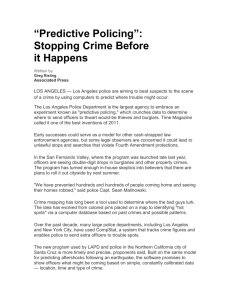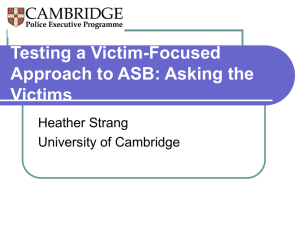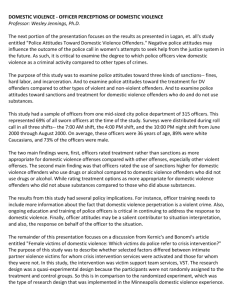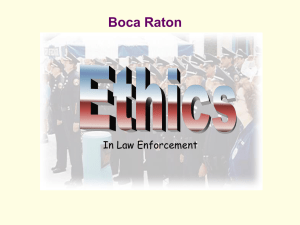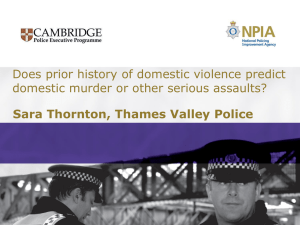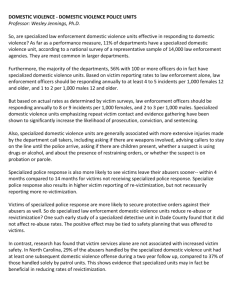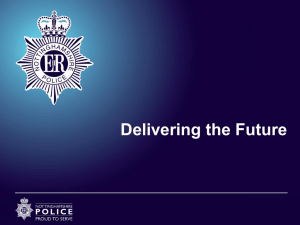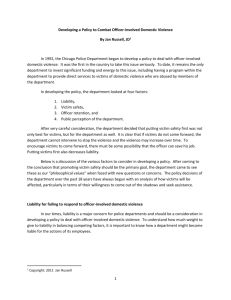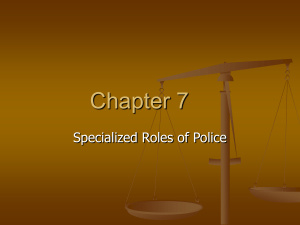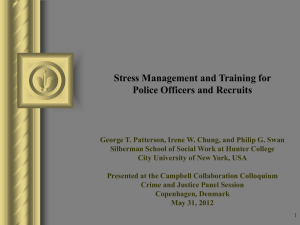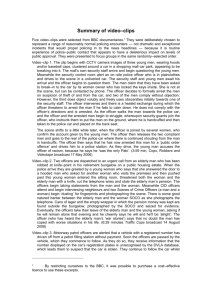Section 6 Part 3 Community Policing
advertisement
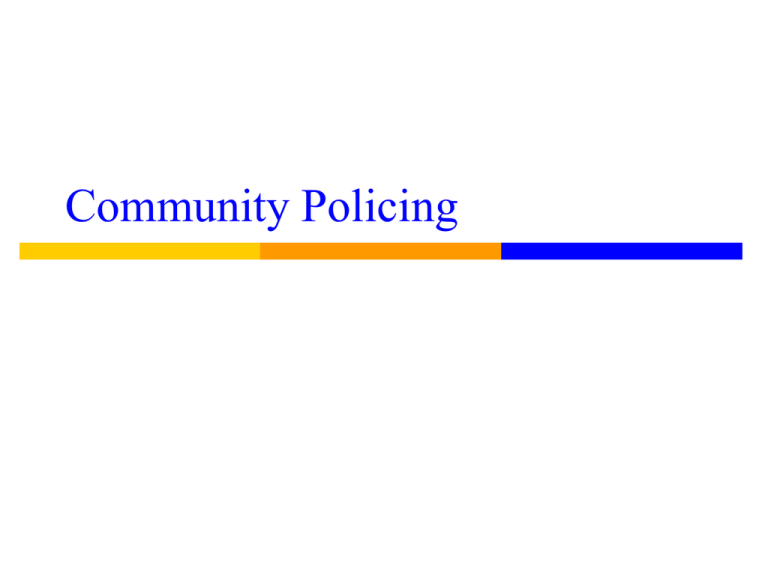
Community Policing Developed in Response ● To the changes that put police in cars and removed them from neighborhoods ● To understanding that modern law enforcement has not been able to make communities safer (for the most part) or to reduce fear of crime ● To the recognition that both the extent and nature of crime in our communities require different police strategies It requires: ● the active participation of local government, civic and business leaders, and public officials ● fundamental changes in the structure and management of police organizations ● that police goals be expanded beyond crime control and prevention ● that police use a wide variety of methods to achieve these goals. Two Core Components Focus on: ● community partnerships ● problem solving instead of crime fighting It is a philosophy more so than a specific set of actions. http://www.youtube.com/watch?v=UAf23H2Dz7I Examples ● Community Coordinated Responses ● Family Justice Units ● Specialized Domestic Violence Officers/Units Coordinated Response Model ● Duluth – Pioneer in the Field ● Interagency Communication and Cooperation key to the process ● Usually established a task force model whereby all stakeholders come to the table to coordinate the responses of all stakeholders ● Key Components: Establish Philosophical Approach; Networking/Interagency Communication and Cooperation; Policy/Protocol Development; Support for Victims; Accountability; Evaluation Philosophical Approach ● Creating a coherent philosophical approach that ● ● ● ● makes victim safety the most important goal Eliminate victim blaming (attitudes and practices) Ask why should she use the system? Understanding that the perpetrator is responsible Examine all reforms to look for unintended consequences that may put the victim in harm’s way Networking/Interagency Communication and Cooperation ● Interagency dialogue is a must ● The process of setting up any Council is critical ● Regular, focused meetings Policy/Protocol Development ● Focus on agency accountability ● Focus on individual accountability ● Helps ensure that change is lasting – beyond individuals who may leave agencies Support for Victims ● Ensures that all essential services exist, identifies needs, and targets funding and implementation in areas where services are lacking ● Asks: How does this practice improve or impair a victim’s protection and safety? Accountability ● Provides opportunities for treatment and change of offenders, but focus is always on accountability. ● Assesses all responses to ensure that batterers are held accountable at all levels. ● Holds agencies responsible for ensuring that batterers are held accountable Evaluate Progress ● Collect data and use it to evaluate changes ● Willingness to change policies and procedures in light of findings ● Recognizing that some data will be difficult to deal with Key Questions ● What will improve the community response? ● What kind of resistance will there be to a different ● ● ● ● ● proposal? Why would that resistance be there? Who are the key leaders to sell on trying something new? How could proposed changes backfire – for the community, the police, the victim? What kind of training on the proposed changes will be needed? How can changes be institutionalized (policy/protocol?) Impact for Law Enforcement Officers: ● Need to play an active role in working with coordinating councils ● Councils ultimately help officers because when all systems work together: victims will be more apt to cooperate with officers in arrest situations and be more apt to use the criminal justice system at all levels, and officers will have more options at their disposal including referrals to service agencies that will respond effectively and ultimately reduce the need for victims to rely upon police response. Family Justice Centers (FJC) ● Pioneered in San Diego. ● Are a place where all (or many) services for victims of domestic violence are provided in one place ● Reduces the burden of accessing multiple service providers ● Increases interagency coordination ● Services may include domestic violence advocacy, prosecution, police, housing assistance, income assistance, civil legal assistance, medical assessment and/or treatment, and faith-based support. Specialized Domestic Violence Units/Officers ● In large police departments ● May involve patrol officers, detectives, crime analysts, victim advocates ● Idea is that they become “specialists” in the area ● In smaller departments, one or two officers can have these same role Ultimately ● A police response that sees domestic violence as integral to community policing and which engages with community wide responses will provide better services to victims, enhance police response, and help officers responding to calls for service.





